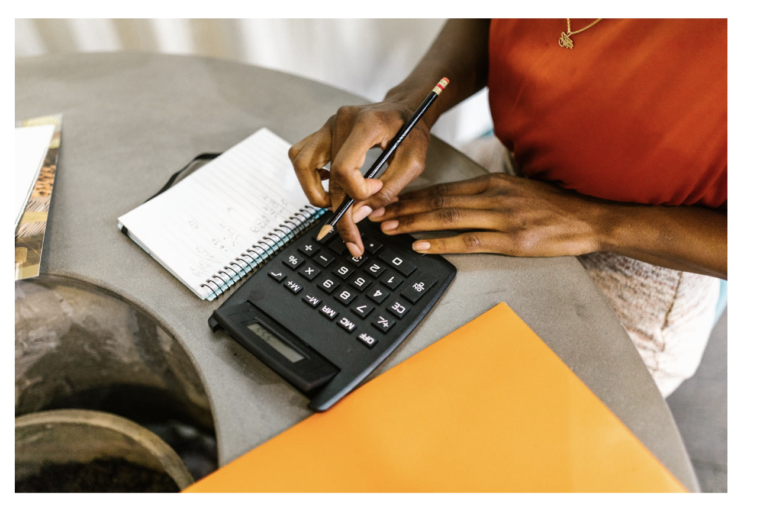6 Funding Options for a Mortgage Down Payment
https://www.pexels.com/photo/woman-uses-calculator-7491011/
Photo by RODNAE Productions from Pexels
For many buyers, the challenges of achieving the infamous 20% downpayment end up casting a shadow over their dream of buying a home. It is true that FHA loans only require you to put down 3.5% – and VA or USDA loans often don’t require a down payment at all! if you fall within the usda income limits its definitely an option you should consider looking into.
But owning less than 20% of your home equity means that you’ll need to afford a longer-lasting mortgage, private mortgage insurance (PMI), and higher interests.
But luckily, draining your savings is not the only way to fund the mortgage down payment you need to secure convenient mortgage terms. Check out these alternative funding options.
Use Gifted Money
If you are considering using a gift or a loan from a friend or family member to fund your down payment, you are certainly not the only one. In 2019, over 32% of first-time buyers used gifted money to secure a 20% deposit on their dream home – and this percentage is on the rise.
The popularity of this downpayment solution is all due to the benefits it offers to both the recipient and the donor. If a family member owns enough cash to support your project, donating up to $16,000 per year (the Annual Exclusion amount for 2022) allows them to enjoy a tax exemption for that given amount.
If the monetary gift exceeds 50% of the value of your monthly household income, you will need to produce a letter from the donor stating that the money they have transferred is a gift and not a loan.
Work on Building Your Savings
When taking out a mortgage, your lender will review your employment history and financial situation. While each application is assessed on a case-by-case basis, there are some indicators that all lenders take into consideration when making you an offer, including your debt-to-income (DTI) ratio.
This indicator offers a snapshot of what percentage of your monthly income is used towards debt repayments, such as mortgages, credit card debt, or student loans.
To lower this percentage, you might consider increasing your income. There are multiple ways to do so, including:
- Consider taking a part-time job
- Get started on a side hustle
- Review your budgeting strategy
- Highlight unnecessary expenses that can be curbed
If you are a freelancer or independent contractor looking to buy your first home, make sure to have enough evidence that your income is stable before applying for a mortgage.
Take Out a Personal Loan To Cover Expenses
Taking out a personal loan is something that many first-time buyers tend to consider as their last resort. However, working in partnership with experienced lenders comes with many benefits – especially if you can count on a DTI ratio lower than 36%.
When used wisely, personal loans are a great alternative to build your credit score over time, which can give you more favorable refinancing options in the future.
Additionally, in today’s seller’s market, immediate cash liquidity can be a great advantage that allows you to snatch a property off the market as soon as it becomes available – just make sure to find low-interest options such as SoFi personal loans.
It is important to notice that most conventional and FHA mortgage lenders will not accept a personal loan as a valid down-payment. However, if you have enough savings to secure your down payment, a personal loan can help you cover your daily expenses.
Since taking out a loan will cause your DTI to spike, make sure it will stay within your lender’s debt-to-income ratio requirements.
Consider Using Your Retirement Money
Deciding to use your retirement savings for your down payment can be a difficult choice to make – but one that might make perfect sense.
Indeed, when you are able to put down a 20% down payment, you can save on PMI, shorten your loan’s lifespan, and decrease your monthly repayments. All of this can significantly improve your financial situation over the next 10 to 30 years and help you build long-term wealth during your working life and beyond.
While there are some tax penalties to endure to withdraw from your 401(k) account, some Roth and Traditional accounts allow for tax-free withdrawals if the money is used to build or buy a first home.
Leverage Home Buying Assistance Programs
There are multiple home buying assistance programs to leverage – especially for first-time buyers:
- Insured or backed loans, such as FHA, VA, or USDA loans only require 0% to 3.5% down payment and no PMI. They are also suitable for those with a low credit score of 580 or above
- Some states, as well as the Department of Housing and Urban Development (HUD), provide support programs for eligible first-time buyers, including Native American first-time homebuyers.
- The Employer Assisted Housing (EAH) Benefit Program allows you to benefit from employer-sponsored monetary assistance, which can help you navigate closing costs.
Review Your Lifestyle
If you are just starting to think about buying a home as a future project, you should consider getting ready for this important step in advance.
From selling some of your belongings to downsizing, and reviewing your budget, learning to live within your means now and start saving early can help you get prepared for the day when your dream home enters the market.

